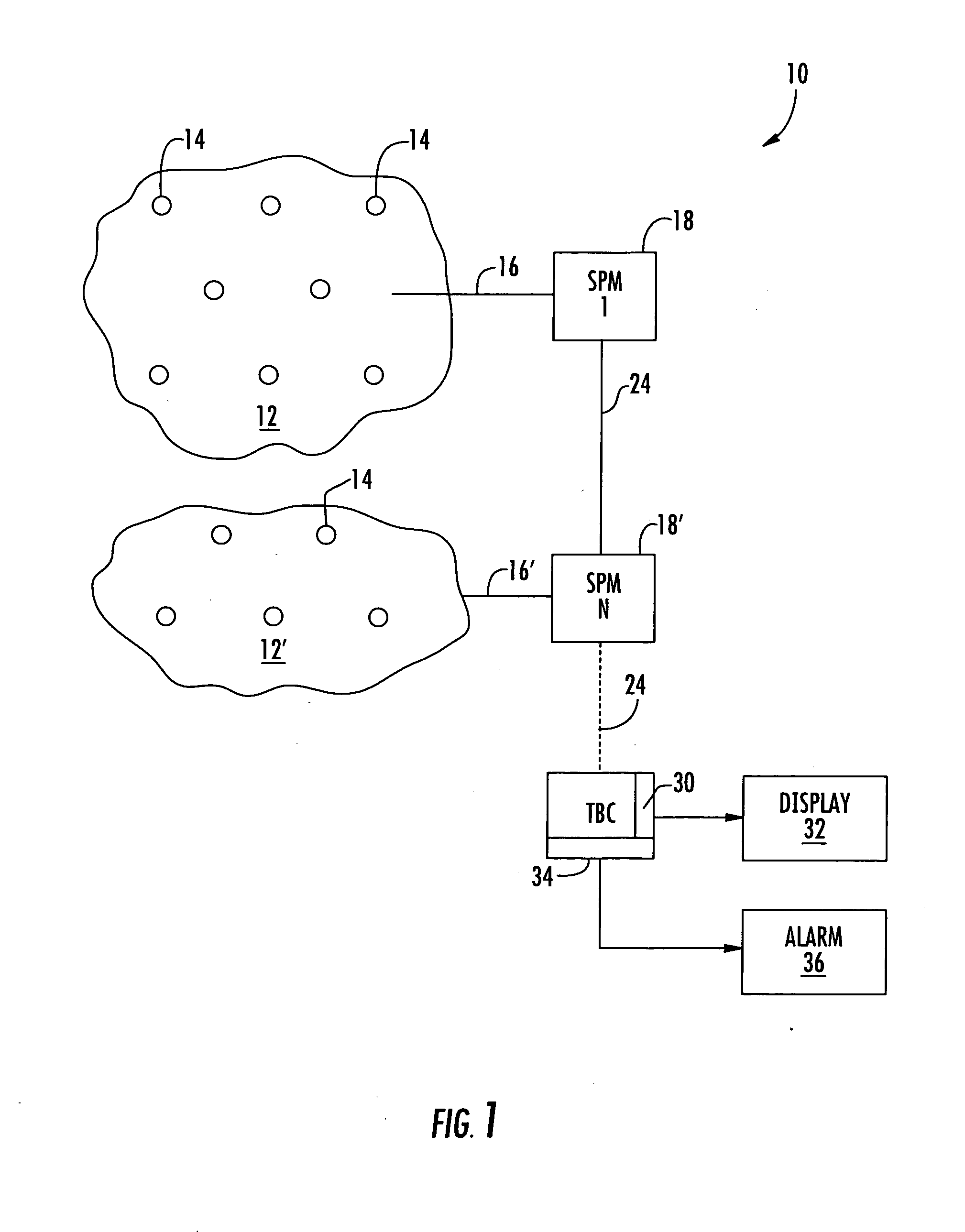Systems, methods and computer program products for characterizing structural events
a technology of structural events and computer programs, applied in the field of non-destructive testing, can solve the problems of inability to efficiently integrate into composite and heterogeneous structures, labor-intensive non-destructive evaluation techniques, and loss of the entire vehicle,
- Summary
- Abstract
- Description
- Claims
- Application Information
AI Technical Summary
Benefits of technology
Problems solved by technology
Method used
Image
Examples
example
[0102]As illustrated in FIGS. 18A-18B, a glass / epoxy composite laminate (L) is instrumented with two normal displacement sensors N1, N2 and two shear / tangential displacement sensors S1, S2 positioned on opposite sides thereof. The laminate (L) is one inch wide, 0.125 inches thick, and sixteen inches long. A Mode I crack through the thickness of the laminate (L) as shown in FIG. 15 and a Mode II delamination crack as shown in FIG. 17 were initiated. Although the sensors N1, N2, S1, S2 are illustrated as individual nodes, it should be understood that unit cells, such as cells 10 and 110, may be used.
[0103]With respect to the Mode I crack, a 0.125 inch long edge notch was used to initiate a fatigue crack. The growth of the Mode I crack was monitored under constant amplitude cyclic load. With respect to the Mode II delamination crack, a delamination was created between the plies at approximately mid-thickness. This delamination specimen was also subjected to axial cyclic load and the gr...
PUM
 Login to View More
Login to View More Abstract
Description
Claims
Application Information
 Login to View More
Login to View More - R&D
- Intellectual Property
- Life Sciences
- Materials
- Tech Scout
- Unparalleled Data Quality
- Higher Quality Content
- 60% Fewer Hallucinations
Browse by: Latest US Patents, China's latest patents, Technical Efficacy Thesaurus, Application Domain, Technology Topic, Popular Technical Reports.
© 2025 PatSnap. All rights reserved.Legal|Privacy policy|Modern Slavery Act Transparency Statement|Sitemap|About US| Contact US: help@patsnap.com



